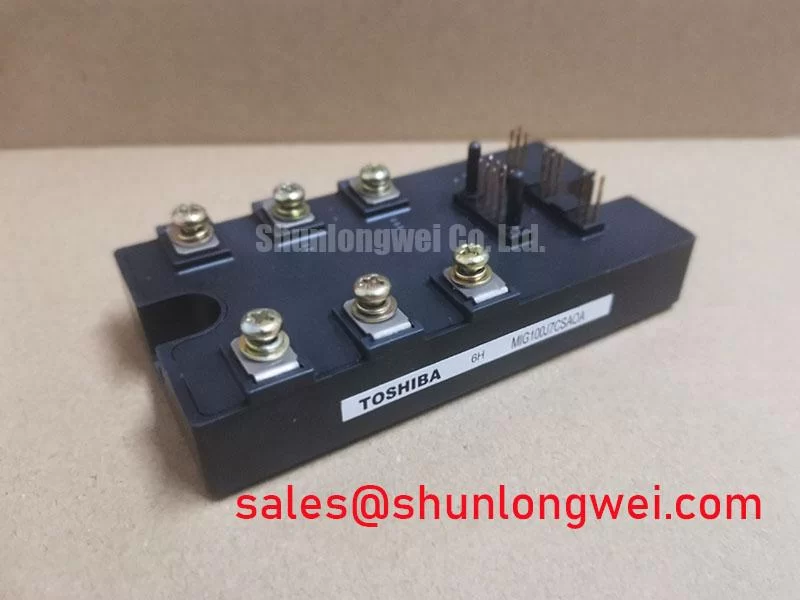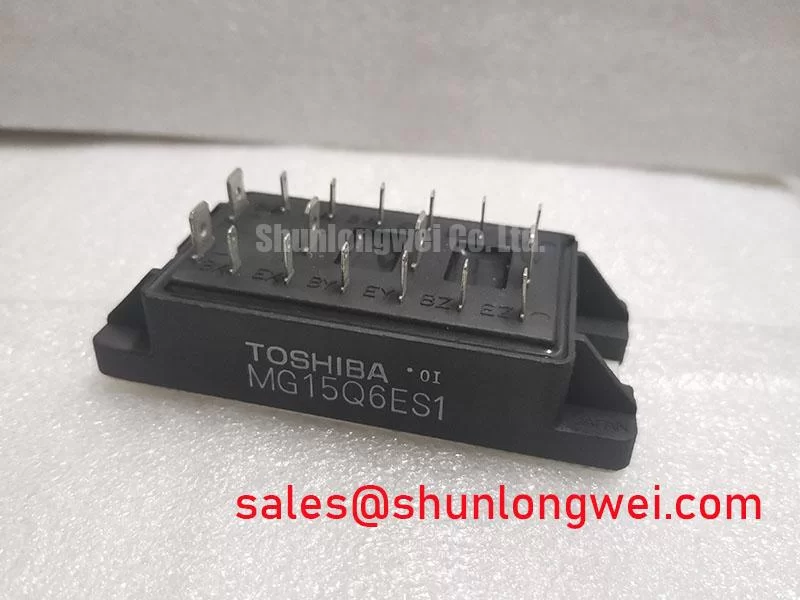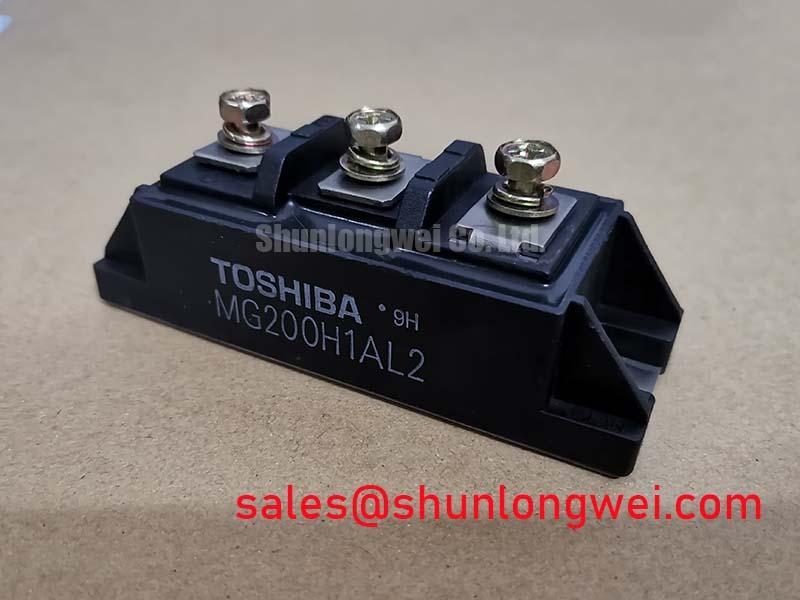Content last revised on November 22, 2025
MIG100Q201H: The 1200V/100A IGBT Module for High-Efficiency Industrial Drives
Introduction: A Strategic Balance of Power and Speed
Defining Performance in Three-Phase Power Conversion
The Toshiba MIG100Q201H is a 1200V, 100A six-pack IGBT module designed to deliver a superior balance between conduction and switching losses. Its core specifications—1200V | 100A | VCE(sat) 2.7V max—are engineered for robust, high-frequency power conversion. Key benefits include enhanced system efficiency and simplified thermal management. For engineers designing for 400V/480V AC industrial motor drives, this module directly addresses the need for a reliable power stage that minimizes energy waste during operation. For systems demanding higher power handling in a similar package, the MIG200Q101H offers a 200A alternative.
Application Scenarios & Value
Achieving System-Level Efficiency in Variable Frequency Drives (VFD)
In the design of a modern Variable Frequency Drive (VFD), the primary engineering challenge is maximizing efficiency across a range of operating speeds and loads. This requires a power stage that minimizes total power loss—a combination of static (conduction) and dynamic (switching) losses. The MIG100Q201H is purpose-built for this challenge. Its maximum collector-emitter saturation voltage (VCE(sat)) of 2.7V at its full rated current of 100A keeps conduction losses in check during high-torque, low-speed operation.
Simultaneously, its fast switching characteristics, including a typical reverse recovery time (trr) of just 0.15 µs for the integrated free-wheeling diodes, become critical as the Pulse Width Modulation (PWM) frequency increases for smoother motor control. This rapid switching capability reduces the energy dissipated during turn-on and turn-off events (Eon/Eoff), directly contributing to higher overall VFD efficiency and reducing the thermal load on the heatsink. This makes the MIG100Q201H an excellent fit for general-purpose inverters, servo drives, and uninterruptible power supplies (UPS) where reliability and energy savings are paramount.
Key Parameter Overview
Decoding the Specs for Efficient Power Stage Design
The technical specifications of the MIG100Q201H are tailored for demanding industrial power conversion applications. The following table highlights the critical parameters that directly influence system performance, efficiency, and thermal design.
| Parameter | Symbol | Value | Conditions |
| Collector-Emitter Voltage | VCES | 1200 V | VGE = 0 V |
| Gate-Emitter Voltage | VGES | ±20 V | |
| Collector Current (DC) | IC | 100 A | TC = 25°C |
| Collector-Emitter Saturation Voltage | VCE(sat) | 2.7 V (Max) | IC = 100 A, VGE = 15 V |
| Diode Forward Voltage | VF | 2.5 V (Max) | IE = 100 A |
| Total Power Dissipation | PC | 540 W | TC = 25°C |
| Isolation Voltage | Visol | 2500 V | AC, 1 minute |
Download the MIG100Q201H datasheet for detailed specifications and performance curves.
Technical Deep Dive
Interpreting the Balance Between VCE(sat) and Switching Speed
The relationship between an IGBT's on-state voltage (VCE(sat)) and its switching speed is a fundamental trade-off in power semiconductor design. Think of it like a water valve: a valve that opens very wide (low VCE(sat)) to allow maximum flow with little resistance might be mechanically slower to open and close. Conversely, a faster, more agile valve might have a slightly narrower opening, creating more resistance. The MIG100Q201H is engineered to find an effective middle ground. Its 2.7V maximum VCE(sat) is not the absolute lowest on the market, but it is competitive for its voltage and current class, preventing excessive heat generation from conduction losses. This design choice allows for the optimization of the silicon to achieve faster switching times. This balance is crucial for minimizing total energy loss in applications like robotic servo drives, where both high-torque (conduction-dominant) and high-speed (switching-dominant) phases are common.
Frequently Asked Questions (FAQ)
What is the primary benefit of the MIG100Q201H's VCE(sat) of 2.7V?
A VCE(sat) of 2.7V at 100A ensures manageable conduction losses. This directly translates to lower heat generation when the device is fully on, simplifying the heatsink design and improving overall system reliability by keeping the junction temperature under control.
How does the integrated Free-Wheeling Diode (FWD) impact performance in motor drive applications?
The fast and soft recovery characteristics of the integrated FWD are critical. In a motor drive, the diode provides a path for the inductive motor current when the IGBT turns off. A fast FWD with a low reverse recovery time (trr) minimizes power loss and voltage spikes during commutation, protecting the IGBT and reducing electromagnetic interference (EMI).
Is the MIG100Q201H suitable for paralleling to achieve higher current?
While the datasheet does not explicitly detail paralleling guidelines, IGBT modules like the MIG100Q201H generally can be paralleled with careful design. Key considerations include ensuring symmetrical PCB layout for balanced current sharing and considering the positive temperature coefficient of VCE(sat) to prevent thermal runaway. For a detailed guide on this topic, exploring resources on IGBT Paralleling is recommended.
What does the 2500V isolation rating signify for system design?
The Visol rating of 2500V (AC for 1 minute) guarantees robust electrical isolation between the high-power terminals and the module's mounting base. This is a critical safety feature that meets industrial standards (like IEC 61800-5-1), protecting operators and low-voltage control electronics from potentially lethal high voltages, a mandatory requirement in industrial power systems.
Strategic Considerations for System Design
A Foundation for Cost-Effective and Reliable Inverters
Integrating the MIG100Q201H into a power conversion system provides a strategic advantage beyond its electrical performance. The use of a standardized, 6-in-1 integrated module accelerates the design-to-market cycle by reducing the complexity of the power stage layout and procurement. Compared to a discrete solution, this module minimizes parasitic inductance and simplifies the gate drive design, leading to more predictable and reliable switching behavior. This allows engineering teams to focus resources on other critical areas, such as control algorithms and system-level thermal management, ultimately building a more competitive and robust end product. For further reading on the advantages of integrated modules, see our analysis on IPM vs. Discrete IGBT solutions.

















